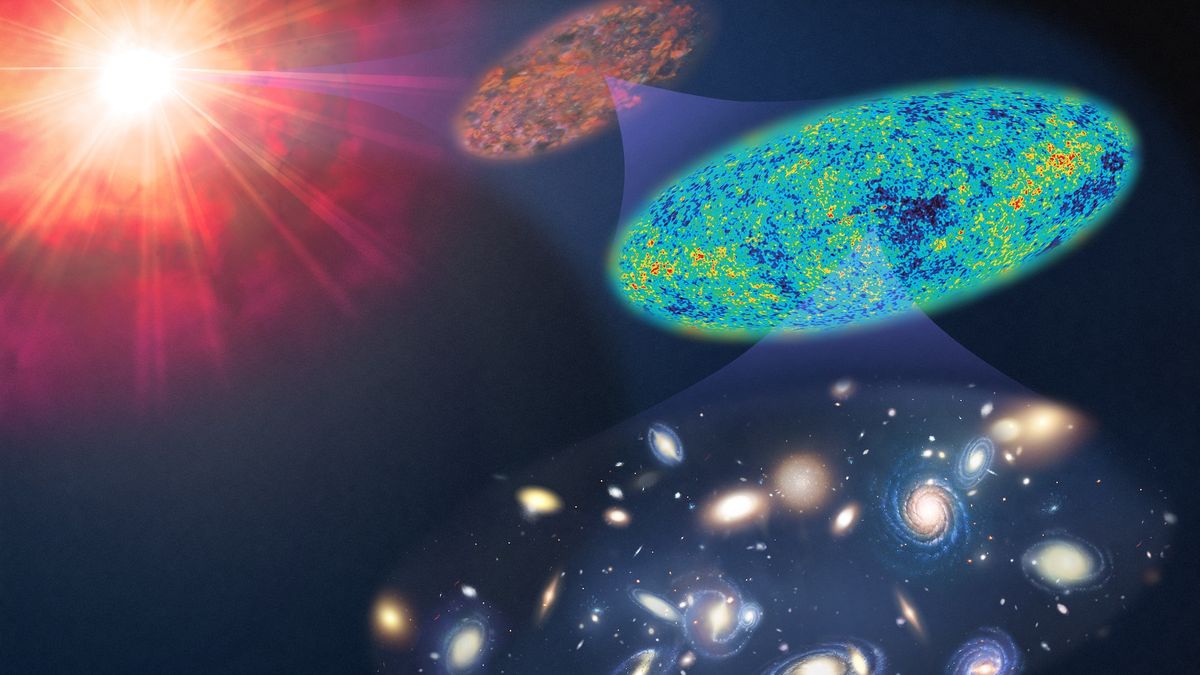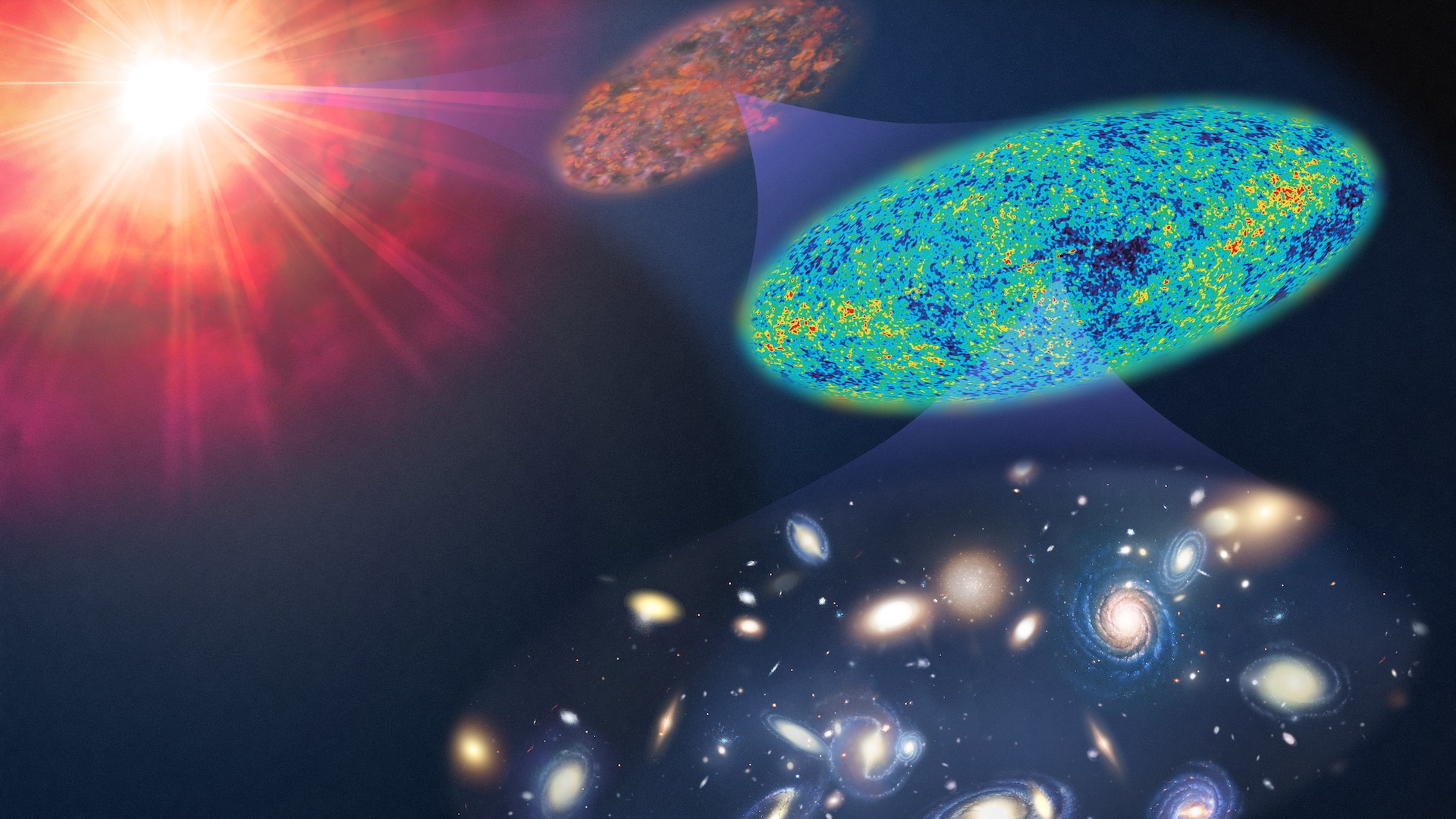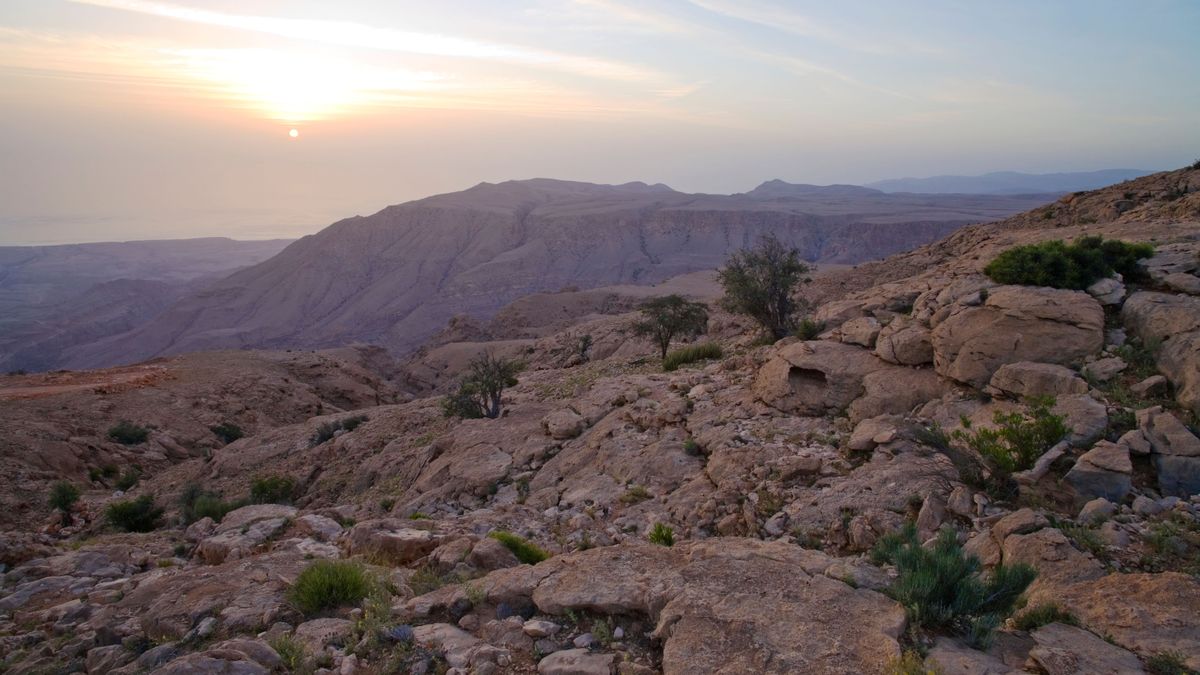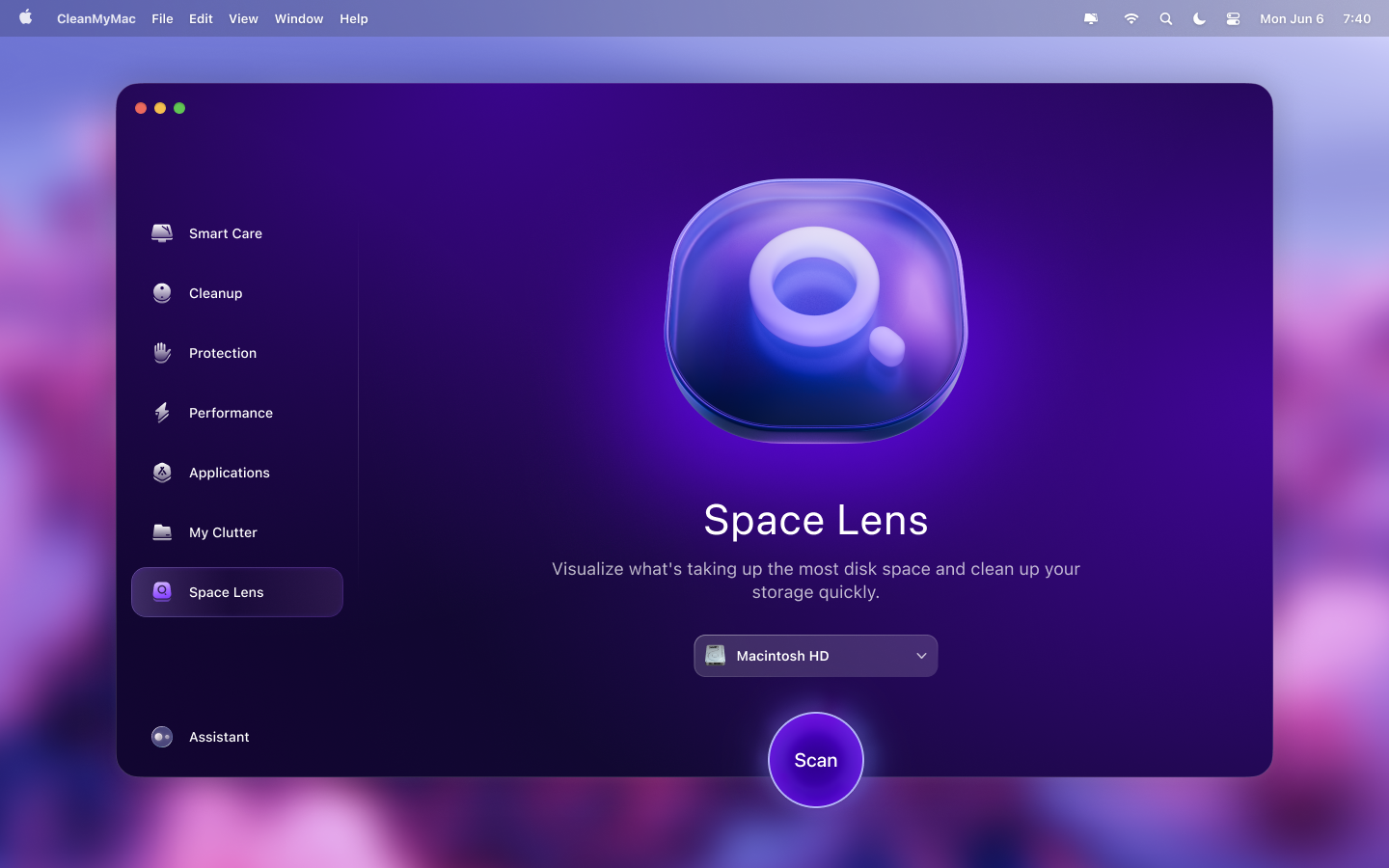Nowadays, the dark of night is interspersed with the light of stars. But before the stars were born, did light shine at the beginning of the universe?
The short answer is “no.” But the long answer reveals light’s extraordinary journey. At first, the early universe’s light was “trapped,” and it took several hundred thousand years for it to escape. Then, it took about 100 million years for stars to form.
By examining the speed and direction in which galaxies were moving, astronomer Edwin Hubble discovered the universe was expanding. This 1929 discovery suggested that the cosmos was once smaller, with scientists eventually calculating that the entire universe was concentrated into one, infinitely dense point about 13.8 billion years ago, until the Big Bang happened.
“With the Big Bang, space was created and expanded, along with everything in the universe,” Andrew Layden, chair of physics and astronomy at Bowling Green State University in Ohio, told Live Science.
The only way all the matter that now makes up the universe could fit in a tiny spot “is if it was energy at that time,” Layden said. Einstein’s famous equation E=mc2 revealed that energy and mass can be interchangeable, Layden explained.
As the universe expanded, the density of its energy decreased, and it cooled. The first particles then began to form within the first second after the Big Bang, according to Las Cumbres Observatory. These included the photons that make up light, as well as the protons, neutrons and electrons that make up atoms. By about three minutes after the Big Bang, protons and neutrons could fuse together to create the nuclei of atoms such as helium, according to NASA.
“Think of fog and dew,” Layden said. “Particles in a high-energy state are dispersed like water in fog, and when the energy gets low enough, they can condense out like droplets of dew.”
Related: Can anything travel faster than the speed of light?
However, although photons of light existed since the first second after the Big Bang, they could not yet shine across the universe. This is because the early cosmos was so hot that “electrons were moving too fast for atomic nuclei to hold them in orbit around them,” Layden said. “The universe was just this very hot, dense soup.”
All the electrons zipping around freely in the early universe meant that light could not move around very much. “As light tried to travel in a straight line during this time, it always bumped into electrons, so it could not go very far,” Layden said.
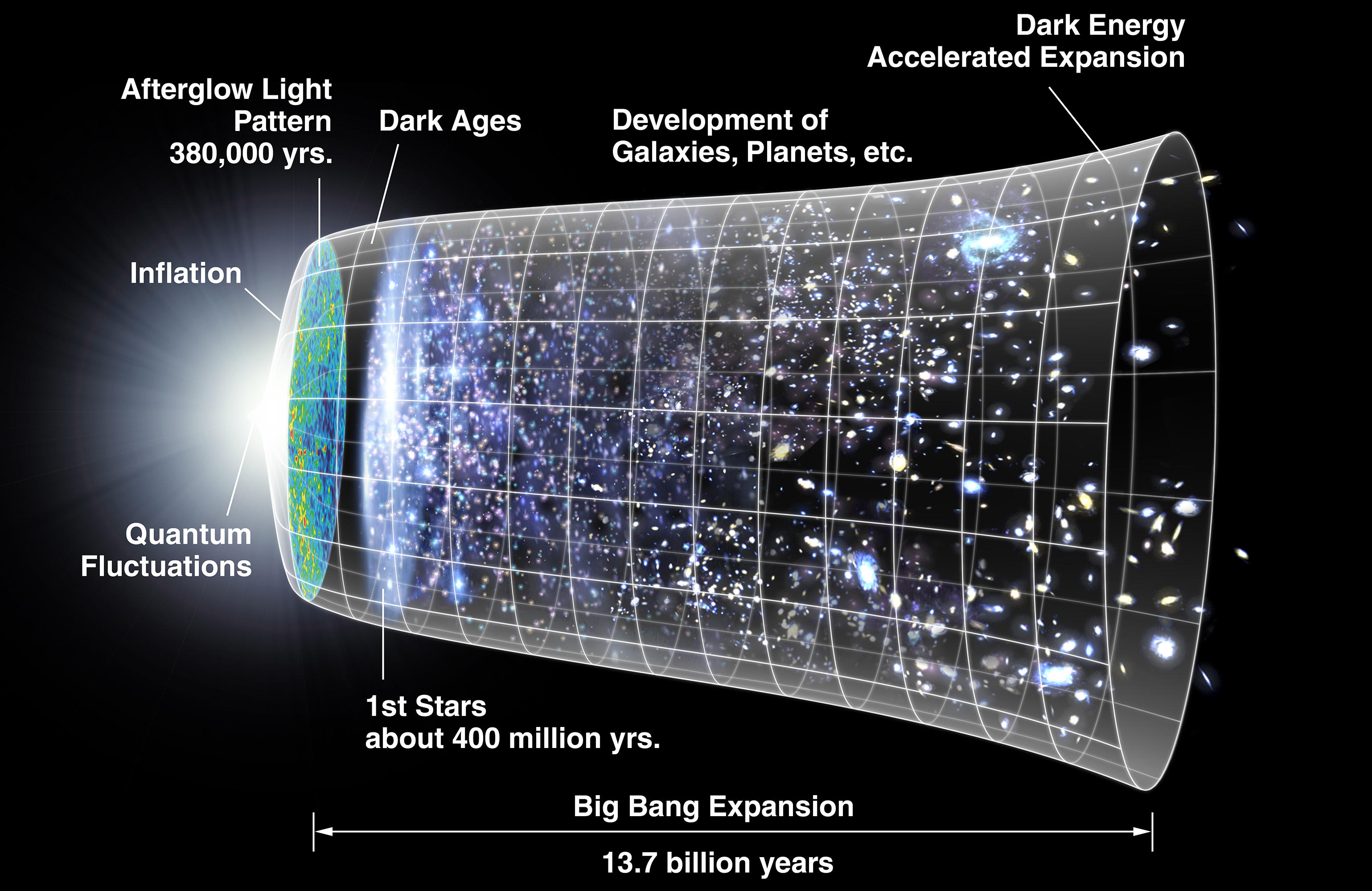
A similar situation is found within the sun, Srinivasan Raghunathan, a cosmologist at the University of Illinois, Urbana-Champaign, told Live Science. “You can imagine a photon of light created by nuclear reactions at the center of the sun trying to come out to the sun’s surface,” he said. “The center of the sun is extremely hot, and so there are a lot of free electrons present. This means light cannot travel in straight lines.”
The distance from the center of the sun to its surface is about 432,450 miles (696,000 kilometers). The speed of light in a vacuum is about 186,000 miles per second (300,000 km/s), but in the sun, “it takes about 1 million to 2 million years for light to escape from the center of the sun to its surface,” Raghunathan said.
However, about 380,000 years after the Big Bang, the expansion of the universe let the cosmos cool enough for atomic nuclei to glom onto electrons. “When that happens, all those electrons are no longer free,” Layden said. “This happens at about 3,000 Kelvin [4,940 degrees Fahrenheit, or 2,725 degrees Celsius], the surface temperature of a coolish reddish star.”
Within a short number of years, “everything goes from being a hot dense soup to a clear universe where light can travel freely,” Layden said. “At that moment, the first photons in the universe can escape.”
The light typical of the universe when it was about 3,000 kelvins was in near-infrared to visible wavelengths, Layden noted. However, as the cosmos expanded over the course of more than 13 billion years and cooled to an average temperature of about 2.73 Kelvin (minus 455 F, or minus 270 C), the universe’s first light stretched to longer microwave wavelengths.
Astronomers first detected this leftover radiation from the Big Bang, called the cosmic microwave background, in 1964.
Analyzing these microwaves has yielded many insights. For instance, the gravitational pull of galaxies can distort light — a phenomenon called gravitational lensing. Examining the amount of distortion the cosmic microwave background has experienced at different points in the sky can help scientists reconstruct the large-scale structure of the universe — the arrangement of galaxies and the giant voids between them across the cosmos, Raghunathan said.
After the light from the Big Bang was released, the universe experienced a period known as the cosmic dark ages. Eventually, after millions of years, the gravitational pull of clouds of gas led these clumps of matter to collapse in on themselves.
“This created the first generation of stars, and the universe had galaxies full of stars by about 1 billion years after the Big Bang, beginning the cosmic dawn,” Layden said.


